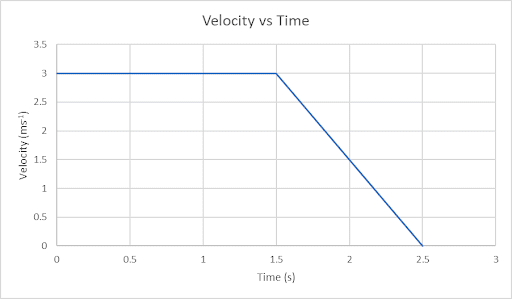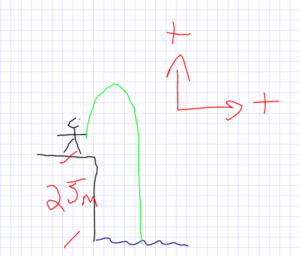
Andy George, IB Ambassador of Physics at IB Wave, Math & TOK Teacher.
Index
How to maximize your physics performance
IB Physics can be a demanding class for many students, but it should not be in terms of the Mathematics.
Students are never required to do calculus, so the math never gets much beyond simple arithmetic and trigonometry.
How can problem solving be so difficult then? By using some simple strategies, you can dramatically improve your physics performance.
These include reading for physics content, units, and visualizing & drawing problems.
Key Terms
Reading an IB Physics problem is really about being a code breaker.
For better or worse, this is an academic class, and the International Baccalaureate does not give you much (if any) extra information in their questions, but you need to be able to identify the key words or phrases, and understand what they mean in a physics-sense.
I would strongly suggest that you underline all the words you find that are important and the data provided.
For example, a common key phrase in mechanics is “constant velocity.”
This is a simple statement but it means many different things: initial and final velocity are equal, acceleration is zero, and the net force acting on the body is also zero.
Being a detective looking for this information is the single most important way I see that students can improve.
Units
Units are a huge advantage that IB Physics has over some of the other sciences.
The units given in an equation or a graph, can be major clues as to how to approach a question.

For example, in the graph in Figure 1, use your units to determine what the area under these lines would be.
Meters per second multiplied by seconds would give you meters, which is our unit for displacement.
If the question asks about the gradient of the lines, do the calculation Δy/Δx gives you the slope, so use that with the units again.
Meters per second divided by seconds gives you m.s¯², which is our unit for acceleration.
Always doing unit analysis on both sides of the equation can help solve in terms of SI units.
The International Baccalaureate also frequently asks you to identify fundamental and derived units.
The 7 SI units are: meters, seconds, moles, amperes, Kelvin, candela (though not part of the IB syllabus) and kilogram.
Notice that the kilogram is the only SI unit with a prefix.
A first step when approaching a problem that has prefixes on units besides the kilogram, is to immediately replace those prefixes with the related power of 10.
For example megawatts (MW) would become Watts x 10^6.
A list of all the prefixes can be found on Page 3 of the Physics Data Booklet.
Visualizing and Drawing
Because you are given all (or nearly all) of the equations you will need, the challenge can be on determining what information is given and then which of the many formulas to use.
A quick sketch of the situation can help to visualize the scenario and help you fill in the known data.
This definitely does not have to be IB Art quality work.

This is a sketch that represents a typical IB SUVAT question.
A boy standing on a cliff throws a ball up and fails to catch it, so it lands in the ocean below.
This is obviously not a detailed drawing that needs to take you much time to draw.
However, you can see that the initial velocity is up and that the final displacement when the ball lands in the water is down.
The pluses are used to indicate the selected positive directions.
This can aid in determining the signs on your vectors.
Here you can see the initial velocity is positive, while the displacement and acceleration (g), are both negative.
From here, write out your known values, select the equation that fits, and solve.
Make things approachable and recognizable
When you sit for your IB exam, you will face new and challenging questions.
Make things as familiar and understandable as possible.
Looking for Key Terms, Units, and Drawing Sketches can all help you tackle these problems in a more confident manner because you’ve done it many times already.
Thanks to IB Wave, you can prepare for your IB Physics exam and learn the best revision & exam techniques you need to know, in order to answer the questions the International Baccalaureate way.




